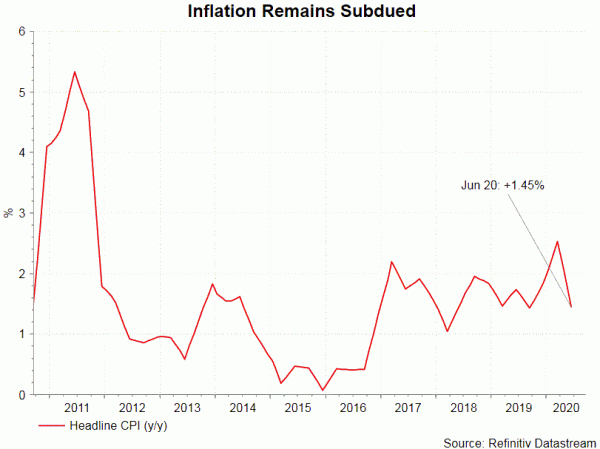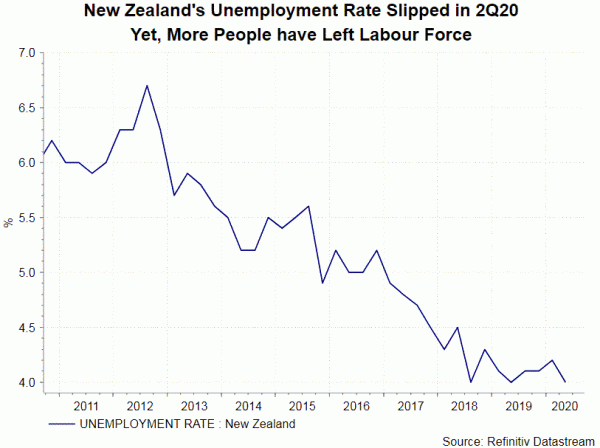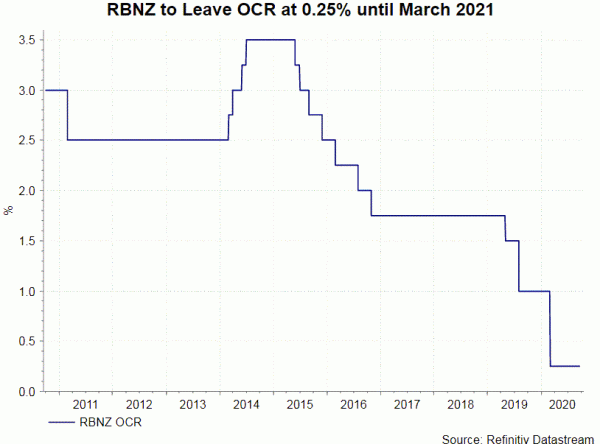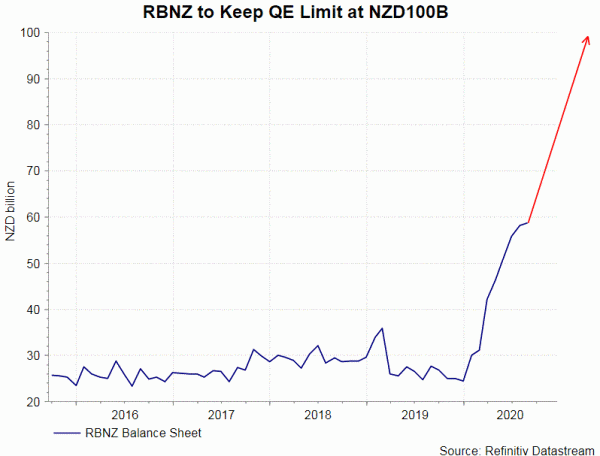After a big move in August, the RBNZ will likely leave the OCR unchanged at 0.25% and the cap of Large Scale Asset Purchase (LSAP) unchanged at NZD 100B. It is, however, expected to offer more indication on the alternative policy tools to be implemented. While we expect the forecast guidance will remain the same, any change would likely be a move closer to negative interest rate. This could pressure New Zealand dollar.
Economic developments since the last meeting came largely inline with RBNZ’s August forecasts. Overall, the backdrop of subdued inflation has remained unchanged, suggesting further easing measures are needed. GDP contracted -12.2% q/q in 2Q20. This came in slightly better than RBNZ’s expectation of -14.3%. Housing price has been surprisingly resilient over the past month. We expect the central bank to revise higher their forecast at the meeting. Auckland was raised to Alert level 3 on August 12, the same day as the August RBNZ meeting. While the level had been reduced to 2.5 and will be lowered further to 2 later this week. BNZ’s manufacturing PMI plunged -8.3 points to 50.7 in August. This marks the lowest reading since May. While the key indices of new orders (54.0) and production (51.1) still remained positive, employment (49.0) remained in contraction for the sixth consecutive month. As suggested in the accompanying report, “the level 3 lockdown placed on New Zealand’s largest population and economic region meant the sector would experience another hit. While results in other parts of the country led to the national result keeping its head above water, the latest results show how fragile and short the recovery can be”. The economic impacts of restrictive measures will be reflected as more macroeconomic indicators for 3Q20 are released.


We do not expect any change in the monetary policy following a big move in August. We, however, would watch for any dovish tilt in the statement and the forward guidance. Last month, RBNZ surprisingly expanded the size of the LSAP program (QE) by +NZD 40B to NZD 100B (cap). The timeframe for the buying has been extended to June 2022 (from June 2021). The central bank also intended to front-load the buying in order to suppress market rates. While the OCR stayed unchanged at 0.25%, the central bank reinforced the intention to adopt negative interest rates. We anticipate all these to remain intact this month. Meanwhile, the central bank will reiterate the forward guidance that the OCR will be “held at 0.25% in accordance with the guidance issued on March 16”. At the March emergency meeting in light of the coronavirus outbreak, RBNZ cut the policy rate to 0.25% and agreed unanimously to keep the OCR at this level for at least 12 months. It is still possible that the central bank could soften its guidance, signaling to lower rates earlier than March 2021.
In August, RBNZ outlined additional stimulus tools, including negative OCR, direct funding for retail banks at near-OCR via a Funding for Lending Program, and foreign assets purchases. We hope to see more discussions on these in September. At a speech last week, Governor Adrian Orr noted that the central bank has been “effective in lowering interest rates across the board, and ensuring there is plentiful liquidity in the financial system”. He reaffirmed the stance that RBNZ was actively preparing additional monetary policy tools to use if needed.


On exchange rate, NZDUSD has gained 19% since mid-March and over 2% since the August meeting. Trade-weighted index has gained about +11% and 1.7%, respectively. The members warned at the previous meeting that “a rise in the New Zealand dollar exchange rate has moderated local exporters’ incomes”. However, Governor Orr has not commented much on New Zealand dollar’s strength at speeches over the past few weeks. We would see if there’s further warning at the upcoming meeting.













